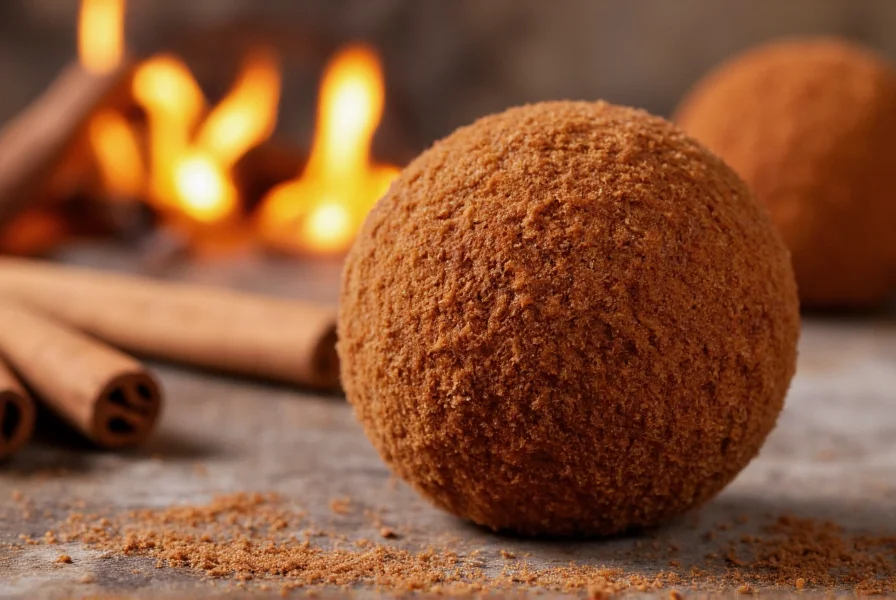When you pop a cinnamon fireball into your mouth, you're experiencing one of America's most enduring spicy candies. Atomic Fireballs have captivated candy lovers for generations with their signature combination of intense cinnamon flavor and gradual heat buildup. Unlike their alcoholic namesake (Fireball Cinnamon Whisky), these hard candies deliver their "fire" through concentrated cinnamaldehyde—the compound responsible for cinnamon's characteristic warmth.
What Exactly Are Cinnamon Fireballs?
Atomic Fireballs represent the classic interpretation of cinnamon fireballs—a small, spherical hard candy with a bright red exterior and intense cinnamon flavor. Produced by the Ferrara Candy Company (formerly Ferrara Pan), these candies have maintained consistent popularity since their introduction in the 1950s. Each piece delivers an initial sweet burst followed by a building warmth that earns them the "fireball" moniker.
The manufacturing process creates a unique flavor experience. As you suck on an Atomic Fireball, the candy slowly dissolves, releasing increasing concentrations of cinnamaldehyde. This gradual release mechanism distinguishes them from other cinnamon candies that deliver their entire flavor profile immediately.
History of Atomic Fireballs
Atomic Fireballs entered the candy market during the 1950s atomic age, when radiation-themed products captured public imagination. The Ferrara Pan Candy Company launched these candies with packaging featuring atomic symbols that reflected contemporary cultural fascination with nuclear energy. Despite changing ownership over the decades—including periods under Brach's and Farley's & Sathers—the candy's formula and distinctive red color have remained remarkably consistent.
Unlike many novelty candies from that era, Atomic Fireballs survived changing tastes and health concerns to become a candy aisle staple. Their enduring appeal demonstrates how effective flavor combinations can transcend temporary trends.
Fireball Cinnamon Whisky: The Alcoholic Counterpart
Many searchers confuse Atomic Fireballs with Fireball Cinnamon Whisky, a completely different product. Launched in 2004 by the Sazerac Company, Fireball Cinnamon Whisky combines Canadian whisky with natural cinnamon flavors. Despite sharing a similar name and flavor profile, these products serve entirely different purposes—one as a confectionery treat, the other as a distilled spirit.
The confusion between these products represents a common search challenge. When researching cinnamon fireball candy history, many users accidentally encounter information about the alcoholic beverage instead. Understanding this distinction helps clarify search results for those seeking authentic information about the candy.
The Science Behind the Burn
The distinctive warming sensation of cinnamon fireballs comes from cinnamaldehyde, which constitutes about 60-90% of cinnamon's essential oil. Unlike capsaicin (the compound that makes chili peppers hot), cinnamaldehyde activates different receptors—specifically TRPA1 receptors—which create a warming rather than burning sensation.
| Compound | Source | Sensation Type | Receptor Activated |
|---|---|---|---|
| Cinnamaldehyde | Cinnamon | Warming | TRPA1 |
| Capsaicin | Chili peppers | Burning | TRPV1 |
| Menthol | Mint | Cooling | TRPM8 |
This scientific distinction explains why why do cinnamon fireballs burn remains a common search query—users experience a genuine thermal sensation despite no actual temperature change occurring.
Safety Considerations and Misconceptions
Despite their name, cinnamon fireballs cannot actually create fire. The "fireball" reference describes the sensory experience rather than any combustion capability. However, the intense flavor has led to dangerous internet challenges, particularly the "cinnamon challenge," where participants attempt to consume a spoonful of ground cinnamon within 60 seconds.
Medical professionals strongly advise against such challenges. Inhaling cinnamon powder can cause pulmonary irritation, while consuming excessive amounts may lead to mouth irritation or temporary breathing difficulties. When enjoyed as intended—sucking slowly on one candy at a time—Atomic Fireballs present no significant health risks for most consumers.
Cultural Impact and Enduring Popularity
Atomic Fireballs have maintained cultural relevance through consistent quality and distinctive flavor. Unlike many novelty candies that fade from popularity, these fireballs have appeared in movies, television shows, and even inspired internet memes. Their distinctive red color and intense flavor make them instantly recognizable.
The candy's popularity has spawned numerous copycat products and inspired variations in other candy formats. Some manufacturers have attempted to create "extra hot" versions, though none have matched the original's market penetration. This enduring presence demonstrates how effective flavor engineering can create products with multi-generational appeal.
Frequently Asked Questions
What are cinnamon fireballs made of?
Atomic Fireballs primarily contain sugar, corn syrup, artificial flavor, and cinnamon oil. The distinctive red color comes from Red 40 dye. The key ingredient responsible for the warming sensation is cinnamaldehyde, which constitutes the majority of cinnamon's essential oil content.
Are cinnamon fireballs and Fireball Whisky related?
No, Atomic Fireballs candy and Fireball Cinnamon Whisky are completely separate products made by different companies. The candy was introduced in the 1950s, while the alcoholic beverage launched in 2004. The similar names represent coincidental branding rather than any corporate connection.
Why do cinnamon fireballs create a burning sensation?
The burning sensation comes from cinnamaldehyde activating TRPA1 receptors in your mouth. Unlike capsaicin in chili peppers (which activates different receptors), cinnamaldehyde creates a warming sensation that builds gradually as the candy dissolves, explaining why do cinnamon fireballs burn without actually causing tissue damage.
Where can I buy cinnamon fireballs?
Atomic Fireballs are widely available at most grocery stores, convenience stores, and pharmacies in the United States and Canada. You'll typically find them in the candy aisle alongside other gum and mints. Major retailers like Walmart, Target, and 7-Eleven consistently stock them, and they're also available through online retailers for those researching where to buy cinnamon fireballs.
Are cinnamon fireballs safe to eat?
Yes, when consumed as directed—sucking slowly on one candy at a time—Atomic Fireballs are safe for most people. The intense flavor has led to dangerous internet challenges, but enjoyed normally, they present no significant health risks. People with cinnamon allergies should avoid them, and parents should supervise young children due to choking hazards.











 浙公网安备
33010002000092号
浙公网安备
33010002000092号 浙B2-20120091-4
浙B2-20120091-4